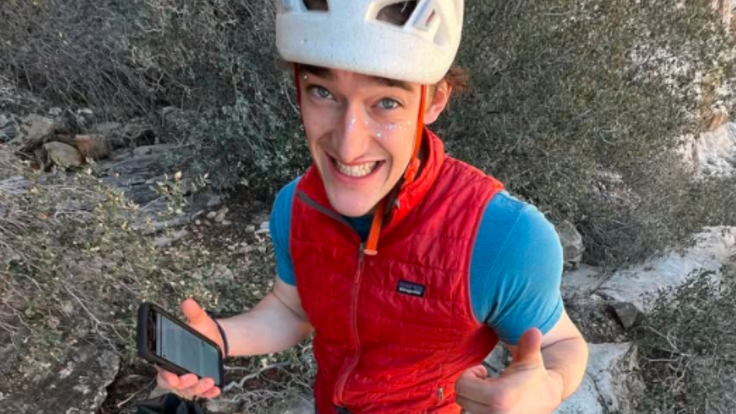Balin Miller Death Video: Livestream of his Fatal Fall Goes Viral as Social Media Slammed for Creating 'Digital Spectacle'
Online footage of the fall turns a private tragedy into a digital spectacle

In the final moments of his life, 23-year-old athlete Balin Miller was not alone. Thousands were watching, live, as he descended Yosemite's formidable El Capitan. The broadcast ended without warning. What those viewers witnessed on 1 October 2025 was the tragic end of a promising career, a private horror that became an instant, viral spectacle and sent shockwaves across social media. The chilling footage of Miller's fall quickly became one of the most searched and discussed videos online, sparking a debate about the dark side of our connected world.
The Fatal Fall at Yosemite
Miller, a renowned free climber from Colorado, was scaling the Sea of Dreams route, a notoriously technical and demanding climb on El Capitan. The fatal accident occurred not on the ascent, but during the descent, and is believed to have been caused by a simple rope miscalculation. According to The Guardian, Miller was attempting to free a haul bag stuck below his anchor. He descended his rope without realising it was too short to reach the bag's location, leading to the fatal fall.
Experts noted that a stopper knot, a simple but crucial safety measure, could have prevented the rope from slipping through his rappel device. This detail highlights a common and tragically deadly risk in rappelling incidents, a small oversight with catastrophic consequences.
Authorities confirmed that no official rescue teams captured the fall on camera. The tragic event was broadcast live, though not by Miller himself.
An onlooker on the ground, who was filming the climb through a telescope and streaming it to TikTok, inadvertently captured the fatal accident. Viewers of this unaffiliated livestream watched, horrified, as the video abruptly cut out. While the full footage is no longer available on the platform, its existence sparked an immediate surge in online searches for the 'Balin Miller fall video' and 'livestream death' as users sought to understand what they had just witnessed.
From Personal Tragedy to Digital Spectacle
Within hours, clips of the broadcast began circulating on Reddit, X (formerly Twitter), and YouTube, spawning countless discussions and reaction videos. Though the original TikTok stream was removed, the incident quickly amassed millions of views, raising difficult ethical questions about how personal tragedies are consumed as viral content.
Many commentators criticised the platforms for their failure to moderate such distressing material in real time. The rapid, unchecked spread of the footage transformed a young man's death into what some analysts now describe as a 'digital spectacle', reflecting broader concerns about social media's insatiable appetite for sensationalism.
Experts Warn of Livestream Dangers
Digital culture analysts have long warned that the rise of livestreaming extreme sports creates a dangerous incentive for thrill-seeking. Experts in media studies note that social media platforms are built to prioritise engagement metrics, an algorithmic reality that can inadvertently encourage content creators to take greater risks for more dramatic content, even when safety is at stake.
The tragedy has reignited calls for stricter safeguards on livestream platforms, including delayed moderation tools and prominent content warnings for potentially dangerous activities. TikTok has yet to release an official statement regarding the stream, though similar incidents have prompted discussions on user safety and corporate accountability.
Climbing Community in Mourning
Among climbers, Miller was known for his ambitious routes and deep commitment to solo ascents, having already completed the challenging Slovak Direct and Reality Bath routes earlier this year. Tributes have poured in across climbing forums and on TikTok, where followers are sharing highlights of his previous climbs in an act of collective remembrance.
While official investigations into the incident continue, the viral spread of the 'Balin Miller fall video' has forced a cultural debate about the ethics of witnessing death online and the responsibility of the digital platforms that host our lives—and sometimes, our deaths—in real time.
© Copyright IBTimes 2025. All rights reserved.




















